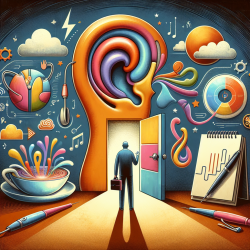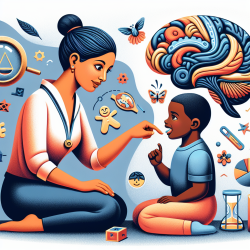Introduction
Emotion regulation plays a pivotal role in shaping students' engagement and relationships within the classroom. Recent research by De Neve et al. (2022) provides a comprehensive analysis of how emotion regulation difficulties impact student engagement and relationships with peers and teachers. This blog aims to translate these findings into actionable insights for practitioners, particularly those involved in online therapy services like TinyEYE, to enhance educational outcomes.
Understanding Emotion Regulation in Education
The study, "Emotion Regulation in the Classroom: A Network Approach to Model Relations among Emotion Regulation Difficulties, Engagement to Learn, and Relationships with Peers and Teachers," explores the complex interplay between emotion regulation, student engagement, and social relationships. It highlights how difficulties in emotional awareness, clarity, and access to regulation strategies are linked to student engagement and relationships.
Key Findings and Implications
The research identifies several pathways through which emotion regulation affects classroom dynamics:
- Direct Impact on Engagement: Emotional awareness and clarity are directly linked to emotional engagement, while behavioral engagement is primarily influenced by emotional awareness.
- Indirect Pathways via Relationships: Teacher support and peer relations mediate the impact of emotion regulation on student engagement. Nonacceptance of emotional responses negatively affects these relationships, highlighting the importance of fostering emotional acceptance.
- Causal Relationships: Emotional engagement potentially increases access to emotion regulation strategies, improving impulse control and emotional clarity.
Practical Applications for Practitioners
Practitioners can leverage these insights to enhance educational outcomes:
- Incorporate Emotion Regulation in Curricula: Develop programs that focus on enhancing emotional awareness, clarity, and acceptance among students.
- Strengthen Teacher-Student Relationships: Train teachers to support students' emotional regulation through empathetic communication and validation of emotions.
- Foster Positive Peer Interactions: Encourage peer support systems that promote emotional acceptance and reduce negative judgments.
Encouraging Further Research
While the study provides valuable insights, further research is needed to explore the longitudinal effects of emotion regulation on student engagement and relationships. Practitioners are encouraged to collaborate with researchers to develop evidence-based interventions tailored to diverse educational settings.
To read the original research paper, please follow this link: Emotion Regulation in the Classroom: A Network Approach to Model Relations among Emotion Regulation Difficulties, Engagement to Learn, and Relationships with Peers and Teachers.










